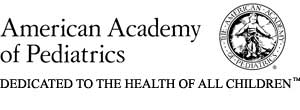

In some children, fevers can trigger seizures. Febrile seizures occur in 2
percent to 5 percent of all children between the ages of 6 months and 5 years.
Seizures, sometimes called "fits" or "spells," are frightening, but they
usually are harmless.
Febrile seizures usually happen during the first few hours of a fever. The
child may look strange for a few moments, then stiffen, twitch and roll his
eyes. He or she will be unresponsive for a short time, breathing will be
disturbed, and skin may appear a little darker than usual. After the seizure,
the child quickly returns to normal. Seizures usually last less than one
minute but, although uncommon, can last for up to 15 minutes.
Febrile seizures rarely happen more than once within a 24-hour period.
Other kinds of seizures (ones that are not caused by fever) last longer, can
affect only one part of the body, and may occur repeatedly.
If your child has a febrile seizure, act immediately to prevent injury.
Febrile seizures tend to run in families. The risk of having seizures with other episodes of fever depends on the age of your child. Children younger than 1 year of age at the time of their first seizure have about a 50 percent chance of having another febrile seizure. Children older than 1 year of age at the time of their first seizure have only a 30 percent chance of having a second febrile seizure.
The recommendations in this statement do not indicate an exclusive course of treatment or serve as a standard of medical care. Variations, taking into account individual circumstances, may be appropriate.